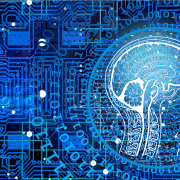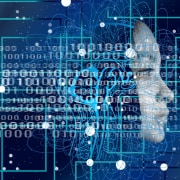|
Getting your Trinity Audio player ready...
|
By Soo Jin So
First posted on the Global Anticorruption Blog
Artificial intelligence (AI) tools, with their capacity to efficiently process and analyse vast amounts of data, have enormous potential to enhance anti-corruption efforts. Traditional investigative methods, which often require extensive manual review of financial records, contracts, and communications, can be time-consuming and prone to human error. AI-powered systems, especially those driven by machine learning, can review large datasets to identify patterns and anomalies, flagging potentially corrupt activities more swiftly and accurately than human investigators. Some of the most promising applications of AI technology to anti-corruption include:
- Anomaly detection in financial transactions: By using sophisticated algorithms, AI systems can recognize patterns of suspicious spending, detect sudden shifts in financial behaviour, and flag inconsistencies that may indicate bribery, fraud, or money laundering, while also significantly reducing false positives. For example, following the Global Laundromat scandal, HSBC implemented AI systems that identified complex corruption and fraud schemes by analysing vast amounts of data, including geolocation, IP addresses, and usage patterns. AI tools can also assess relationships between accounts, customers, and businesses, uncovering hidden connections that could indicate corrupt activities. In banking and finance, this helps institutions identify the risks associated with doing business with specific parties. Additionally, AI can analyse unstructured data, such as news articles or social media posts, to help financial institutions and regulators uncover negative information that may go unnoticed through traditional monitoring methods.
- Public sector monitoring: AI tools could transform how governments monitor contracts, procurement processes, and public spending. By automating oversight, AI helps uncover conflicts of interest, favouritism, and inflated pricing in government contracts. For example, the World Bank’s Governance Risk Assessment System (GRAS) has been implemented in Brazil to flag potential corruption risks in public procurement. GRAS analyses vast public datasets from electoral registers, social programs, payroll records, and blacklisted firms to screen for evidence of collusion, improper political influence, and other red flags. GRAS’s data-driven approach has enabled Brazilian authorities to detect millions of dollars’ worth of corruption at both the state and municipal levels. Its predictive capabilities extend beyond government contracts, helping authorities identify collusive networks and atypical spending patterns in high-risk sectors.
- Predictive analytics in law enforcement: AI also plays a critical role in predictive analytics, helping law enforcement agencies forecast areas most susceptible to corruption. By analysing historical data on corruption cases, AI models can identify risk factors that human analysts might miss. This allows law enforcement agencies to focus resources where corruption is most likely to occur. For example, the US Securities and Exchange Commission’s Earnings Per Share initiative uses AI to detect accounting and disclosure violations that might indicate earnings manipulation. The initiative has led to numerous enforcement actions. Similarly, the US Department of Justice (DOJ) has successfully utilised AI analytics in high-profile foreign corruption cases, such as the conviction of Arturo Murillo, a former Bolivian minister involved in a multimillion-dollar bribery scheme. AI analysis of financial records helped uncover financial anomalies and connections – which might otherwise gone unnoticed – that ultimately enabled the DOJ to find evidence that Murillo had received over $500 000 in bribe payments to help a Florida-based company secure a $5.6-million contract with the Bolivian Ministry of Defense.
While AI presents significant opportunities to combat corruption, its effective implementation faces several challenges that threaten to undermine its potential. These obstacles require careful consideration. Some of the critical challenges facing AI in anti-corruption efforts include:
- Data challenges: AI’s ability to detect corruption depends on the quality, completeness, and reliability of the data which is used to train the system, and which the system analyses. When the data are incomplete, biased, or outdated, then the AI-generated results will mirror these distortions, and can lead to inaccurate results, undermining the integrity of anti-corruption efforts. For instance, project MARA in Brazil, which calculates corruption scores using conviction data, suffers from political biases that shape its training datasets. Similarly, a study of AI systems used to detect money laundering found that poor quality data led to significantly reduced accuracy.
- Privacy concerns: The extensive data collection necessary for AI systems to function effectively raises significant privacy and ethical concerns. Consider, for example, India’s Public Financial Management System, which employs AI to track government spending and flag corruption risks. This system collects detailed personal and organisational data, and this has sparked debates over whether it infringes on civil liberties. Similarly, a Dutch court invalidated Systeem Risico Indicatie, a welfare fraud detection system, that aggregated personal data from various sources, citing its failure to comply with privacy rights under the European Convention on Human Rights.
- Lack of transparency and explainability: Many AI systems operate as “black boxes,” where the decision-making processes are opaque, making it difficult to interpret and validate their findings. For example, China’s Zero Trust project aimed to identify corruption among over 60-million public officials by cross-referencing 150 databases, including bank statements, property transfers, and private purchases. While effective at identifying irregularities that might suggest corruption, internal researchers acknowledged the system’s inability to explain how it reached specific conclusions. The opacity of AI systems can weaken public trust in those systems. Public institutions may find it difficult to provide meaningful explanations of AI-driven decisions, which can undermine the principles of transparency and accountability in public decision making. This lack of explainability hinders the credibility of AI-driven insights in legal contexts where evidence must meet high standards of proof and transparency.
These issues suggest challenges to the effective use of AI to fight corruption. We also need to be alert to the potential for corrupt actors themselves to use AI systems to achieve their unlawful ends, and to undermine anti-corruption efforts. For example, the ability of AI systems to create and intensify disinformation may pose a particularly serious threat to anti-corruption efforts. In Bangladesh, a deepfake video falsely portraying a politician in a comprising situation went viral, damaging her reputation and undermining trust in democratic processes. Similarly, during the US election cycle, OpenAI, the company behind ChatGPT, reported rejecting over 250 000 requests to create fake images of political candidates. These incidents highlight the scale of disinformation threats, where AI is used to generate false but convincing content to manipulate public opinion, smear reputations, or distract from anti-corruption campaigns.
To fully harness AI’s transformative potential in combating corruption, governments, institutions, and stakeholders must address its inherent challenges with deliberate and thoughtful strategies. By ensuring that AI systems operate with accountability and fairness, while also mitigating the risks of misuse, such as disinformation and biased decision-making, these technologies can enhance trust in public institutions and strengthen democratic governance.
The journey toward leveraging AI effectively in anti-corruption efforts is complex, but with targeted investments, AI can serve as a powerful tool to uncover hidden networks of corruption, protect public resources, and promote equity. In doing so, we can not only unlock AI’s vast potential but also reinforce the foundational principles of integrity, accountability, and justice in our societies.








